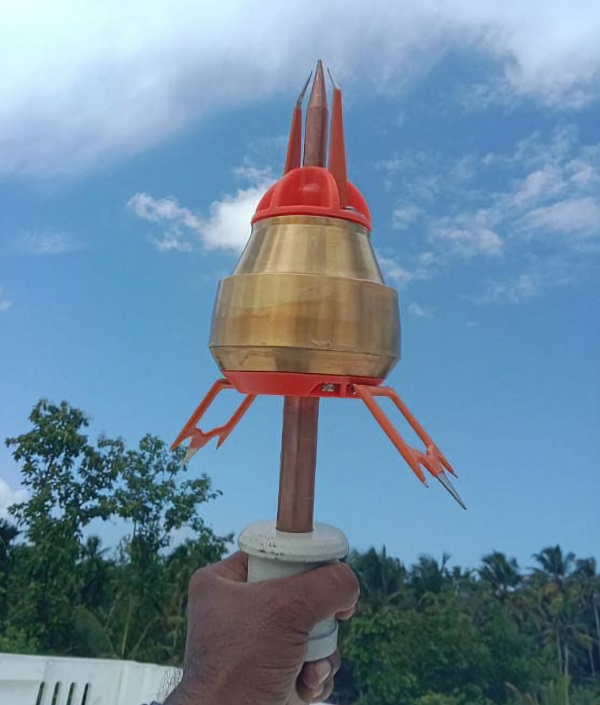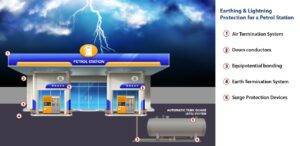Why is understanding the difference between Surge Arrester and Lightning Arrester crucial? Did you know the UK’s weather department reports over 3 million lightning flashes every day around the world? That means about 44 strikes happen every single second. But if lightning strikes are so common how do people protect themselves and their buildings from them?
Using a technology, called a lightning arrester to reduce and eliminate lightning risks. But the different terms used for arresters sometimes cause confusion. Even electrical engineers mix up Surge Arresters and Lightning Arresters. Therefore, in this blog we will explore the Difference Between Surge Arrester and Lightning Arrester. By the end of this video, you will clearly understand:
- Lightning Arrester
- Surge Arresters
- Their types, applications, and the differences between them
Why are Lightning Arresters important?
A lightning strike releases a huge amount of energy in just a few seconds. This energy can strike buildings or electrical systems, causing serious damage. To protect these structures and systems, we install Lightning Arresters at their highest point.
Lightning Arresters are key components of a comprehensive Lightning Protection System. They protect the power system by creating a low-resistance path for lightning charges to follow to the ground. This way, the charges are safely grounded, and the electrical systems remain safe from lightning damage.
There are mainly two types of lightning arresters available in the market:
Conventional Lightning Arrester

Conventional lightning arresters protect simple structures from lightning. These long metallic rods, often made of copper, are placed on the highest points of a structure. They connect to metallic conductors that guide the electric charge safely to the ground, preventing short circuits, fire and other damage.
To protect larger areas or structures with a Franklin rod, you’ll need multiple lightning arresters, additional down conductors, and complex earthing designs. This leads to higher costs, more time, and extra manpower. Therefore, Franklin Rods are generally used in smaller structures such as houses and other residential buildings.
The ESE lightning Arrester

The key purpose of using an Early Streamer Emission lightning arrester is to have a faster conductive point of discharge for the lightning bolt and to ground the fault current safely. A single ESE arrester can cover a larger area, compared to conventional arresters.
Let us have a quick look at how an ESE arrester works. The emission of charged particles from the ESE is generated by storing energy from the ambient electromagnetic field at the time of the lightning events.
Talk to our engineers!
What are Surge Arresters?
Surge arresters absorb or divert surges caused by overvoltages. They function on Metal Oxide Varistors (MOV). In simple words, it’s an electrical component whose resistance varies with the voltage. We will make a separate video on MOVs, as covering them here will take a lot of time.
Coming back to overvoltages, they care usually of 3 types:
- Normal Power Frequency Overvoltage Surge: These are temporary in nature, arising from issues like faulty wiring, sudden power restoration, unplanned overloads etc.
- Lightning Surge: As the name implies, this results from a lightning strike.
- Switching Surges: They occur due to opening and closing of extra high voltage lines and switching of inductive or capacitive loads.
Where are Surge Arresters installed?
You will find them in electrical substations, primarily at the entrance of feeders where they can absorb a surge before it enters the substation. They are also installed around power transformers, which due to their high cost, require significant protection.
Unlike Lightning Arresters, Surge Arresters are installed within pad-mounted transformers, on domestic circuit breakers, in substations, and on riser poles. This strategic placement within the power system emphasizes their importance in protecting the transmission lines themselves.
Lastly, don’t get confuse between Surge Arresters and Surge Protectors.
Surge protectors are used for Low Voltage electrical appliances and are called Surge Protection Devices or SPDs. They are also made from MOV but are installed in the home distribution board to protect the home wiring installations.
SPDs protect your appliances by controlling electrical surges. Electrical appliances can malfunction or suffer damage when surge voltage exceeds their design limits. These surges, capable of causing sudden voltage spikes, can damage your TV, fridge, washing machine, and more. SPDs are specifically designed to shield against these spikes.
Now, let’s look at some common Difference Between Surge Arrester and Lightning Arrester
- Surge Arresters are designed to protect the internal electrical systems by managing overvoltages. In contrast, Lightning Arresters protect external structures and their associated electrical components from direct lightning strikes.
- Surge Arresters function as per MOV, Lightning Arresters simply attracts and diverts incoming lightning strike into the ground.
- Surge Arresters defend against a broad spectrum of electrical disturbances, including lightning, switching operations, and other transient voltages. Lightning Arresters, in contrast, are primarily focused on lightning strikes.
We hope this blog has given you a clear understanding of the difference between Surge Arrester and Lightning Arrester. At Axis, our team of over 40+ engineers are ready to assist you in designing and installing your Lightning Protection Systems.
Thank you for reading the blog, Axis is a leading manufacturer and supplier of Electrical Components to over 80+ Countries. Talk to our industry expert by visiting our Contact Us section. You can also watch our videos by our experts – click here.







